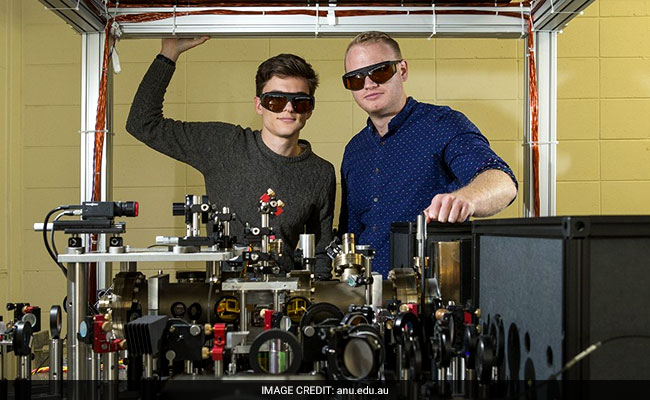
Researchers were surprised by the methods the system came up with to ramp down the power of the lasers.
Melbourne:
Scientists have used an artificial intelligence system to successfully replicate a complex experiment that won the 2001 Nobel Prize in Physics, an advance which may help conduct bigger and more precise research.
The experiment created an extremely cold gas trapped in a laser beam, known as a Bose-Einstein condensate.
"I didn't expect the machine could learn to do the experiment itself, from scratch, in under an hour," said co-lead researcher Paul Wigley from The Australian National University (ANU).
"A simple computer programme would have taken longer than the age of the Universe to run through all the combinations and work this out," said Mr Wigley.
Bose-Einstein condensates are some of the coldest places in the Universe, far colder than outer space, typically less than a billionth of a degree above absolute zero.
 They could be used for mineral exploration or navigation systems as they are extremely sensitive to external disturbances, which allows them to make very precise measurements such as tiny changes in the Earth's magnetic field or gravity.
They could be used for mineral exploration or navigation systems as they are extremely sensitive to external disturbances, which allows them to make very precise measurements such as tiny changes in the Earth's magnetic field or gravity.
The artificial intelligence system's ability to set itself up quickly every morning and compensate for any overnight fluctuations would make this fragile technology much more useful for field measurements, said Michael Hush from University of New South Wales at the Australian Defence Force Academy (UNSW ADFA).
"You could make a working device to measure gravity that you could take in the back of a car, and the artificial intelligence would recalibrate and fix itself no matter what," Mr Hush said.
The team cooled the gas to around 1 microkelvin, and then handed control of the three laser beams over to the artificial intelligence to cool the trapped gas down to nanokelvin.
Researchers were surprised by the methods the system came up with to ramp down the power of the lasers.
"It did things a person wouldn't guess, such as changing one laser's power up and down, and compensating with another," said Mr Wigley.
"It may be able to come up with complicated ways humans haven't thought of to get experiments colder and make measurements more precise," he said.
The new technique will lead to bigger and better experiments, Mr Hush added.
The research was published in the journal Scientific Reports.
The experiment created an extremely cold gas trapped in a laser beam, known as a Bose-Einstein condensate.
"I didn't expect the machine could learn to do the experiment itself, from scratch, in under an hour," said co-lead researcher Paul Wigley from The Australian National University (ANU).
"A simple computer programme would have taken longer than the age of the Universe to run through all the combinations and work this out," said Mr Wigley.
Bose-Einstein condensates are some of the coldest places in the Universe, far colder than outer space, typically less than a billionth of a degree above absolute zero.

Paul Wigley (Left) and Michael Hush. Image Stuart Hay, ANU
The artificial intelligence system's ability to set itself up quickly every morning and compensate for any overnight fluctuations would make this fragile technology much more useful for field measurements, said Michael Hush from University of New South Wales at the Australian Defence Force Academy (UNSW ADFA).
"You could make a working device to measure gravity that you could take in the back of a car, and the artificial intelligence would recalibrate and fix itself no matter what," Mr Hush said.
The team cooled the gas to around 1 microkelvin, and then handed control of the three laser beams over to the artificial intelligence to cool the trapped gas down to nanokelvin.
Researchers were surprised by the methods the system came up with to ramp down the power of the lasers.
"It did things a person wouldn't guess, such as changing one laser's power up and down, and compensating with another," said Mr Wigley.
"It may be able to come up with complicated ways humans haven't thought of to get experiments colder and make measurements more precise," he said.
The new technique will lead to bigger and better experiments, Mr Hush added.
The research was published in the journal Scientific Reports.
Track Latest News Live on NDTV.com and get news updates from India and around the world

